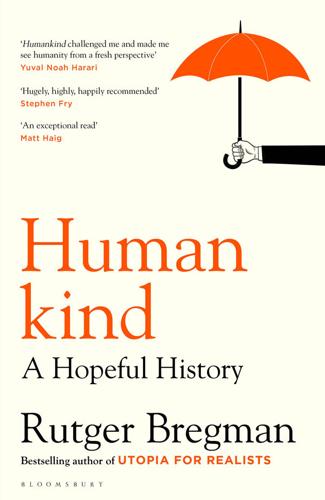
Humankind: A Hopeful History
by
Rutger Bregman
Published 1 Jun 2020
‘They certainly misunderstood children.’11 4 If you think Dr Muzafer Sherif’s manipulations are outrageous, they pale in comparison to the scenario cooked up seventeen years later. On the face of it, the Stanford Prison Experiment and the Robbers Cave Experiment have a lot in common. Both had twenty-four white, male subjects, and both were designed to prove that nice people can spontaneously turn evil.12 But the Stanford Prison Experiment went a step further. Philip Zimbardo’s study wasn’t just dubious. It was a hoax. My own doubts surfaced on reading Zimbardo’s book The Lucifer Effect, published in 2007. I had always assumed his prison ‘guards’ turned sadistic of their own accord.
…
ST-b09-f15. 20‘Tape E’ (no date), No. ST-b02-f21, pp. 1–2. 21Quoted in Blum, ‘The Lifespan of a Lie’. 22Blum, ‘The Lifespan of a Lie’. 23Ibid. 24Ibid. 25Quoted in Alastair Leithead, ‘Stanford prison experiment continues to shock’, BBC (17 August 2011). 26For many years, psychologists used Zimbardo’s ‘experiment’ to spark students’ enthusiasm for the field. Thibault Le Texier spoke to a number of lecturers who said they liked discussing the Stanford Prison Experiment because it at least got students to look up from their phones. In response to my question whether it should still be taught in classrooms today, Le Texier answered dryly, ‘The Stanford Experiment is a pretty good overview of all the errors you can make in scientific research.’ 27Quoted in: Kim Duke and Nick Mirsky, ‘The Stanford Prison Experiment,’ BBC Two (11 May 2002).
…
Chains are clapped around their ankles, nylon caps pulled down over their hair and each one gets a number by which he’ll be addressed from this point on. Finally, they’re given a smock to wear and locked behind bars, three to a cell. What happens next will send shockwaves around the world. In a matter of days, the Stanford Prison Experiment spins out of control – and in the process reveals some grim truths about human nature. The basement of Stanford University, August 1971. Source: Philip G. Zimbardo. It started with a group of ordinary, healthy young men. Several of them, when signing on for the study, called themselves pacifists.
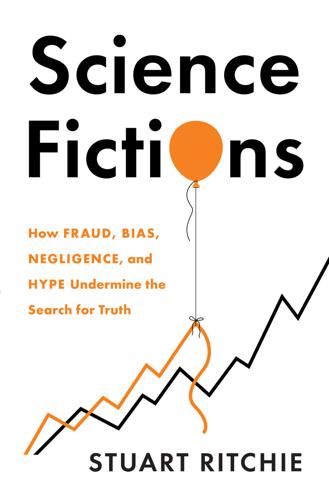
Science Fictions: How Fraud, Bias, Negligence, and Hype Undermine the Search for Truth
by
Stuart Ritchie
Published 20 Jul 2020
He used the findings of his experiment, for example, to testify as an expert witness at the trials of the US military guards at Abu Ghraib prison in Iraq, arguing that the situation the guards were in, and the roles they were made to take on, were the reasons for their shocking abuse and torture of their prisoners.22 Although its implications have always been controversial, only recently have we begun to see just how poor a study the Stanford Prison Experiment was.23 In 2019, the researcher and film director Thibault Le Texier published a paper entitled ‘Debunking the Stanford Prison Experiment’, where he produced never-before-seen transcripts of tapes of Zimbardo intervening directly in the experiment, giving his ‘guards’ very precise instructions on how to behave – going as far as to suggest specific ways of dehumanising the prisoners, like denying them the use of toilets.24 Clearly, this heavily stage-managed production was far from an organic example of what happens when ordinary humans are assigned specific social roles.
…
Philip Zimbardo, ‘Our inner heroes could stop another Abu Ghraib’, Guardian, 29 Feb. 2008; https://www.theguardian.com/commentisfree/2008/feb/29/iraq.usa 23. Erich Fromm, The Anatomy of Human Destructiveness (New York: Holt, Rinehart and Winston, 1975). 24. Thibault Le Texier, ‘Debunking the Stanford Prison Experiment’, American Psychologist 74, no. 7 (Oct. 2019): pp. 823–39; https://doi.org/10.1037/amp0000401 25. The debate continues and Zimbardo has responded to the criticisms. For example, see Philip Zimbardo, ‘Philip Zimbardo’s Response to Recent Criticisms of the Stanford Prison Experiment’, 23 June 2018; https://static1.squarespace.com/static/557a07d5e4b05fe7bf112c19/t/5dee52149d16d153cba11712/1575899668862/Zimbardo2018-06-23.pdf.
…
An experiment by Cuddy and her colleagues in 2010 had found that, compared to those who were asked to sit with arms folded or slouched forward, people who were made to power-pose not only felt more powerful, but had higher risk tolerance in a betting game and had increased levels of testosterone and decreased levels of the stress hormone cortisol.15 Cuddy’s message that people who used the two-minute power pose could ‘significantly change the outcomes of their life’ struck a chord: hers became the second-most-watched TED talk ever, with over 73.5 million views in total.16 It was followed in 2015 by Cuddy’s New York Times-bestselling self-help book, Presence, whose publisher informed us that it presented ‘enthralling science’ that could ‘liberate [us] from fear in high-pressure moments’.17 Provoking quite some degree of mockery, the UK’s Conservative Party seemed to take Cuddy’s message to heart, with a spate of photos appearing that same year of their politicians adopting the wide-legged stance at various conferences and speeches.18 Alas, also in 2015, when another team of scientists tried to replicate the power-posing effects, they found that while power-posers did report feeling more powerful, the study ‘failed to confirm an effect of power posing on testosterone, cortisol, and financial risk’.19 The critical spotlight that was activated in the replication crisis has also been aimed at older pieces of psychology research, with similarly worrying results. Perhaps the most famous psychology study of all time is the 1971 Stanford Prison Experiment, where psychologist Philip Zimbardo split a group of young men into mock ‘guards’ and ‘prisoners’, and had them stay for a week in a simulated prison in the basement of the Stanford University psychology department. Disturbingly quickly, according to Zimbardo, the ‘guards’ began to punish the ‘prisoners’, abusing them so sadistically that Zimbardo had to end the experiment early.20 Along with Stanley Milgram’s 1960s studies of obedience, which found many participants willing to administer intense electric shocks to hapless ‘learners’ (the shocks and the learners were both fake, but the participants didn’t know it), Zimbardo’s experiment is held up as one of the prime pieces of evidence for the power of the situation over human behaviour.21 Put a good person into a bad situation, the story goes, and things might get very bad, very fast.
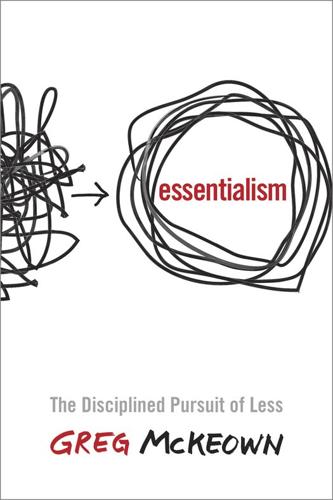
Essentialism: The Disciplined Pursuit of Less
by
Greg McKeown
Published 14 Apr 2014
Eyring has written, “My experience has taught me this about how people and organizations improve: the best place to look is for small changes we could make in the things we do often. There is power in steadiness and repetition.”6 When I met Dr. Phil Zimbardo, the former president of the American Psychological Association, for lunch, I knew him primarily as the mastermind behind the famous Stanford prison experiment.7 In the summer of 1971, Zimbardo took healthy Stanford students, assigned them roles as either “guards” or “inmates,” and locked them in a makeshift “prison” in the basement of Stanford University. In just days, the “prisoners” began to demonstrate symptoms of depression and extreme stress, while the “guards” began to act cruel and sadistic (the experiment was ended early, for obvious reasons).
…
In just days, the “prisoners” began to demonstrate symptoms of depression and extreme stress, while the “guards” began to act cruel and sadistic (the experiment was ended early, for obvious reasons). The point is that simply being treated like prisoners and guards had, over the course of just a few days, created a momentum that caused the subjects to act like prisoners and guards. The Stanford prison experiment is legendary, and much has been written about its many implications. But what I wondered was this: If simply being treated in a certain way conditioned these Stanford students to gradually adopt these negative behaviors, could the same kind of conditioning work for more positive behavior too?
…
Sigmund Krancberg, A Soviet Postmortem: Philosophical Roots of the “Grand Failure” (Lanham, MD: Rowman and Littlefield, 1994), 56. 3. en.wikipedia.org/wiki/poiesi 17. PROGRESS 1. Parts of this chapter were first published in a blog post I wrote for Harvard Business Review called “Can We Reverse The Stanford Prison Experiment?” June 12, 2012. 2. Based on my interviews with Ward Clapham between 2011 and 2013. 3. Speech at the annual Labour Party Conference, September 30, 1993, when Blair was shadow home secretary; see “Not a Time for Soundbites: Tony Blair in Quotations,” Oxford University Press Blog, June 29, 2007, http://blog.oup.com/2007/06/tony_blair/#sthash.P1rI6OHy.dpuf. 4.
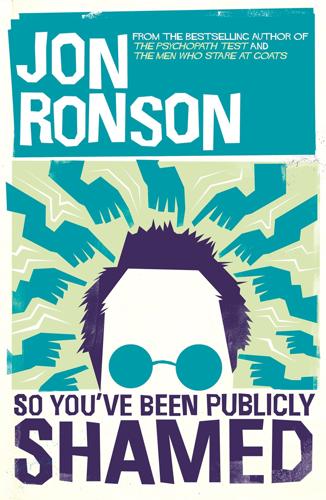
So You've Been Publicly Shamed
by
Jon Ronson
Published 9 Mar 2015
were it not for my freedom to visit the Explorations Cafe and Vista Lounge whenever I liked), at no point, even on the worst nights, did I turn into someone from the Stanford Prison Experiment. What had really gone on in that basement? * Nowadays John Mark works as a medical coder for the health insurance company Kaiser Permanente. But for six days back in 1971 he was one of Zimbardo’s ‘guards’. Tracking down the participants hadn’t been an easy task - Zimbardo has never released all of their names - but John Mark has published letters about his memories of the experiment in the Stanford alumni magazine, which was how I discovered him. ‘What happens when you tell people you were a guard in the Stanford Prison Experiment?’ I asked him over the telephone.
…
I asked him over the telephone. ‘Everyone assumes I was brutal,’ he replied. He sighed. ‘I hear it all the time. You turn on the TV and they’ll be talking about anything to do with brutality and they’ll drop in, “as was shown in the Stanford Prison Experiment …” They were studying it in my daughter’s high school. It really upsets me.’ ‘Why?’ I asked. ‘It’s not true,’ he said. ‘My days as a guard were pretty boring. I just sat around. I was on the day shift. I woke the prisoners up, brought them their meals. The vast majority of the time was just hanging out.’ He paused. ‘If Zimbardo’s conclusion was the true conclusion, wouldn’t it have applied to all the guards?’
…
I carried it through. It was all done for a purpose. I thought I was doing something good at the time.’ After I put the phone down I wondered if Dave had just told me a remarkable thing - something that might change the way the psychology of evil was taught. He might have just debunked the famous Stanford Prison Experiment. And so I sent a transcript of the interview to the crowd psychologists Steve Reicher and Alex Haslam. They’re professors of Social Psychology - Reicher at St Andrews University and Haslam at the University of Queensland. They’ve spent their careers studying Zimbardo’s work. Both of them emailed me back sounding totally unimpressed at the part I’d thought potentially sensational.

The Problem of Political Authority: An Examination of the Right to Coerce and the Duty to Obey
by
Michael Huemer
Published 29 Oct 2012
Subjects of a government satisfy the conditions for the development of Stockholm Syndrome and also show some of its symptoms. 6.7 Case studies in the abuse of power 6.7.1 My Lai revisited In the My Lai massacre, soldiers were just following orders. One soldier who helped the villagers was reviled as a traitor. 6.7.2 The Stanford Prison Experiment Volunteers participated in a simulation of prison life. The guards became increasingly abusive toward the prisoners. 6.7.3 Lessons of the SPE Power leads people to inflict pain and humiliation on others. Those who are not corrupted do little to restrain those who are. 6.8 Conclusion: anatomy of an illusion The common belief in authority is the product of nonrational biases.
…
Sometimes the authorities must succeed in hiding their misdeeds. How often, we do not know. Thompson reports that, after his experience at My Lai, other soldiers told him, ‘Oh, that stuff happened all the time.’51 There is thus reason to suspect that many more massacres occurred that did not make the news. 6.7.2 The Stanford Prison Experiment In 1971, social psychologist Phillip Zimbardo conducted an illuminating study of the effects of imprisonment on both guards and prisoners.52 Zimbardo collected 21 volunteers, all male college students, to play the role of either prisoners or guards in a simulated prison. At the start, all the volunteers wanted to play the prisoner role; none wanted to be guards.
…
One might have suspected that prisoner abuse occurs because prisoners are believed to be criminals or enemies, so that the abuse is thought justified. Or one might have thought that prisoner abuse occurs because individuals with sadistic predispositions are more likely to become guards or because prison inmates tend to be unusually aggressive and thus draw out aggressive responses on the part of guards. The Stanford Prison Experiment is of particular interest in that it puts hypotheses like these to the test. As it turns out, none of these things was the case. There was something about the guard role that brought out the worst in people. Zimbardo’s central conclusion, from this study and much other evidence, is that the determinants of good or evil behavior lie more in the situations that individuals are placed into than in those individuals’ intrinsic dispositions.53 An individual’s circumstances can have dramatic corrupting or uplifting effects.

Evil Genes: Why Rome Fell, Hitler Rose, Enron Failed, and My Sister Stole My Mother's Boyfriend
by
Barbara Oakley Phd
Published 20 Oct 2008
Goldhagen, Hitler's Willing Executioners: Ordinary Germans and the Holocaust (New York: Knopf, 1996); Samantha Power, “A Problem from Hell”: America and the Age of Genocide (New York: Basic Books, 2002), p. 111; Raine and Yang, “Neural Foundations.” 66. P. G. Zimbardo, C. Maslach, and C. Haney, “Reflections on the Stanford Prison Experiment: Genesis, Transformations, Consequences,” in Obedience to Authority: Current Perspectives on the Milgram Paradigm, ed. T. Blass, (Mahwah, NJ: Lawrence Erlbaum, 2000), p. 194; Philip G. Zimbardo, The Lucifer Effect: Understanding How Good People Turn Evil (New York: Random House, 2007), p. 32; T. Carnahan and S. McFarland, “Revisiting the Stanford Prison Experiment.” See also the excellent follow-on article that expands on Carnahan and McFarland's findings: S. A. Haslam and S.
…
In some sense then, most of us are indeed capable of horrendous acts, but it may be that people with different neurological underpinnings would be induced to commit those acts much more easily and for very different reasons. In relation to these ideas, Philip Zimbardo, a former president of the American Psychological Association, recently published The Lucifer Effect—a “penetrating investigation” of his famous 1971 Stanford Prison experiment involving college students who proved themselves capable of becoming sadistic prison guards or abjectly submissive prisoners. Zimbardo drew sweeping conclusions to the effect that it was the situation alone that drew these “good people” into doing “evil.” Zimbardo's understanding was that he had gone out of his way to select “young men who seemed to be normal, healthy, and average on all the psychological dimensions we measured.”
…
Brown alludes to heredity in only desultory fashion, casually pointing out, for example, that “[b]ody abuse was second nature to the women in Diana's family—like writing thank-you letters.” Tina Brown, The Diana Chronicles (New York: Doubleday, 2007), pp. 151–52. 55. For an excellent review of the topic, see T. Carnahan and S. McFarland, “Revisiting the Stanford Prison Experiment: Could Participant Self-Selection Have Led to Cruelty?” Personality and Social Psychology Bulletin 33, no. 5 (2007): 603–14. 56. Heather, Rome; Ramsay MacMullen, Corruption and the Decline of Rome (New Haven: Yale University Press, 1988). 57. Christina Asquith, “Trouble at Texas Southern,” Diverse Issues in Higher Education, December 14, 2006, http://diverseeducation.com/artman/publish/article_6764.shtml (accessed December 20, 2006). 58.
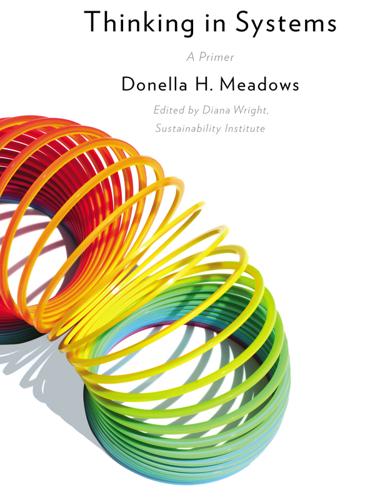
Thinking in Systems: A Primer
by
Meadows. Donella
and
Diana Wright
Published 3 Dec 2008
As simulated fishermen, they over fish. As ministers of simulated developing nations, they favor the needs of their industries over the needs of their people. As the upper class, they feather their own nests; as the lower class, they become apathetic or rebellious. So would you. In the famous Stanford prison experiment by psychologist Philip Zimbardo, players even took on, in an amazingly short time, the attitudes and behaviors of prison guards and prisoners.12 Seeing how individual decisions are rational within the bounds of the information available does not provide an excuse for narrow-minded behavior.
…
The term “satisficing” (a merging of “satisfy” and “suffice”) was first used by Herbert Simon to describe the behavior of making decisions that meet needs adequately, rather than trying to maximize outcomes in the face of imperfect information. H. Simon, Models of Man, (New York: Wiley, 1957). 12. Philip G. Zimbardo, “On the Ethics of Intervention in Human Psychological Research: With Special Reference to the Stanford Prison Experiment,” Cognition 2, no. 2 (1973): 243–56) 13. This story was told to me during a conference in Kollekolle, Denmark, in 1973. Chapter Five 1. Paraphrased in an interview by Barry James, “Voltaire’s Legacy: The Cult of the Systems Man,” International Herald Tribune, December 16, 1992, p. 24. 2.

Behave: The Biology of Humans at Our Best and Worst
by
Robert M. Sapolsky
Published 1 May 2017
Asch, Milgram, and Zimbardo The neurobiology of conformity and obedience won’t soon be revealing much about the core question in this field: if the circumstances are right, is every human capable of doing something appalling simply because they’ve been ordered to, because everyone else is doing it? It is virtually required by law to discuss three of the most influential, daring, disturbing, and controversial studies in the history of psychology, namely the conformity experiments of Solomon Asch, the shock/obedience studies of Stanley Milgram, and the Stanford Prison Experiment of Philip Zimbardo. The grandparent of the trio was Asch, working in the early 1950s at Swarthmore College.62 The format of his studies was simple. A volunteer, thinking that this was a study of perception, would be given a pair of cards. One card would have a line on it, the other a trio of different-length lines, one of which matched the length of the singleton line.
…
And the famed result was that most volunteers complied, shocking the learner repeatedly. Teachers would typically try to stop, argue with the scientist, would even weep in distress—but would obey. In the original study, horrifically, 65 percent of them administered the maximum shock of 450 volts. — And then there’s the Stanford Prison Experiment (SPE), carried out by Zimbardo in 1971.64 Twenty-four young male volunteers, mostly college students, were randomly split into a group of twelve “prisoners” and twelve “guards.” The prisoners were to spend seven to fourteen days jailed in a pseudoprison in the basement of Stanford’s psychology department.
…
Glossary of Abbreviations ACC anterior cingulate cortex ACTH adrenocorticotropic hormone ADHD attention-deficit/hyperactivity disorder AIS androgen insensitivity syndrome APA American Psychological Association ASD autism spectrum disorders BDNF brain-derived neurotrophic factor BLA basolateral amygdala BMI body mass index BNST bed nucleus of the stria terminalis CAH congenital adrenal hyperplasia CBT cognitive behavioral therapy COMT catechol-O-methyltransferase CRH corticotropin-releasing hormone DAT dopamine transporter DHEA dehydroepiandrosterone dlPFC dorsolateral PFC DZ dizygotic EEA equal environment assumption EEG electroencephalographic; EEGs electroencephalograms ERPS event-related potentials fMRI functional magnetic resonance imaging FTD frontotemporal dementia GABA gamma-aminobutyric acid GnRH gonadotropin-releasing hormone GSR galvanic skin resistance GWAS genomewide association studies HG hunter-gatherer HH high-warmth/high-competence HL high warmth/low competence IAT Implicit Association Test LH low warmth/high competence LH luteinizing hormone LL low warmth/low competence LTD long-term depression LTP long-term potentiation MAO-A monoamine oxidase-A MHC major histocompatibility complex MZ monozygotic NCAM neural cell adhesion molecule PAG periaqueductal gray PD Prisoner’s Dilemma PFC prefrontal cortex PMC premotor cortex PMDD premenstrual dysphoric disorder PMS premenstrual syndrome PNS parasympathetic nervous system PTSD post-traumatic stress disorder PVN paraventricular nucleus RNA ribonucleic acid RWA right-wing authoritarianism SDO social-dominance orientation SES socioeconomic status SHRP stress hyporesponsive period SNPs single-nucleotide polymorphisms SNS sympathetic nervous system SPE Stanford Prison Experiment SSRI selective serotonin reuptake inhibitor STG superior temporal gyrus TF transcription factor TH tryptophan hydroxylase ToM Theory of Mind TPJ temporoparietal juncture TRC truth and reconciliation commission vlPFC ventrolateral prefrontal cortex vmPFC ventromedial PFC 54 Abbreviations in the Notes In order to save forests’ worth of paper, references cite only the first one or two authors.
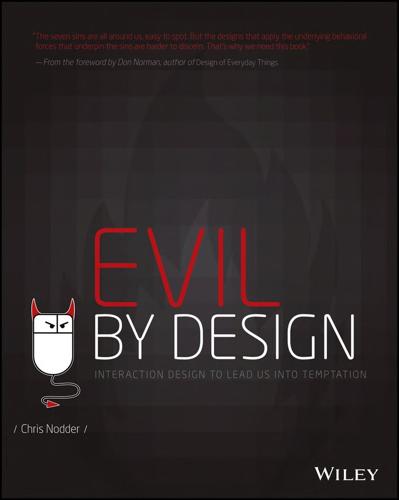
Evil by Design: Interaction Design to Lead Us Into Temptation
by
Chris Nodder
Published 4 Jun 2013
The Mail Online (dailymail.co.uk). August 25 2010. Retrieved January 2013. 4-chan description: Nick Douglas. “What The Hell Are 4chan, ED, Something Awful, And /b/?” (Gawker.com). January 18, 2008. Retrieved January 2013. Use anonymity to encourage repressed behaviors Stanford prison experiment: A good introduction is available on the Stanford Prison Experiment site at prisonexp.org. Deindividuation: Philip Zimbardo. “The human choice: Individuation, reason and order vs. deindividuation, impulse and chaos.” In W. J Arnold and D Levine (Eds.), Nebraska Symposium on Motivation 17 (1969): 237–307. Online disinhibition: John Suler.

Lab Rats: How Silicon Valley Made Work Miserable for the Rest of Us
by
Dan Lyons
Published 22 Oct 2018
Some had even fantasized, as I had during my time in start-up land, that their companies weren’t companies at all, but rather were part of some long-term psychology experiment, a corporate version of the Milgram experiment at Yale or the Stanford prison experiment. The 1961 Milgram experiment studied obedience to authority figures. Psychologist Stanley Milgram ordered subjects to keep administering ever-stronger shocks to a “learner” on the other side of a wall, and many kept going, even when the learner shrieked, pleaded, and banged on the wall. In the 1971 Stanford prison experiment, twenty-four college students were put into a mock prison, with half role-playing as guards and half role-playing as prisoners, to see what happens when people are given power over others.
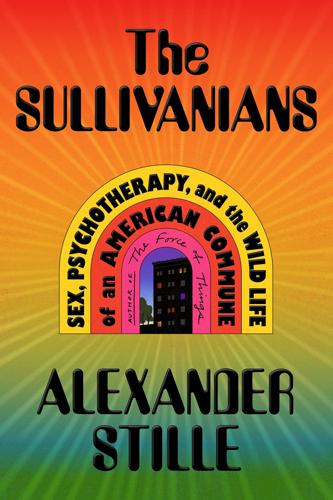
The Sullivanians: Sex, Psychotherapy, and the Wild Life of an American Commune
by
Alexander Stille
Published 19 Jun 2023
The Robbers Cave experiment (1954) pitted groups of boys into opposing camps that resulted in a kind of Lord of the Flies degree of group hostility. Stanley Milgram’s famous obedience experiments (1963) encouraged participants to inflict pain on others—to see how far they would go in obeying authority. In the Stanford Prison Experiment (1971), a psychology professor created a simulated prison in which students were asked to be either prisoners or guards, leading to disturbing levels of cruel and sadistic behavior. These experiments lasted a short time, but their meaning and value—as well as the potential harm they caused—are still widely debated.
…
In the first of his experiments, two-thirds of the subjects were willing to deliver the highest level of shock. This might explain why, despite signs of obvious pain and trauma, trainees of the Sullivan Institute continued to push their patients to dump their spouses, send their children away, and cut off their families. In many ways, however, the best analogy is the Stanford Prison Experiment (1971), in which a psychology professor turned the basement of the university’s psychology department into a simulated prison and randomly assigned a group of undergraduates to the roles of guards and prisoners. The students adapted so quickly to their assigned roles that they were either inflicting or submitting to rapidly increasing levels of sadistic punishment; the experiment had to be cut short when the lead psychologist seemed to lose sight of the real pain he was causing.
…
“However, none of the ‘good guards’ ever intervened to prevent the cruelty of their fellow guards.” That sounds quite a bit like the Sullivanian therapists—who ranged from cruel and sadistic to comparatively sympathetic—none of whom challenged the system that gave therapists such power over their patients. Bill Goldberg thinks that the Stanford Prison Experiment helps explain much about groups like the Fourth Wall. “The experiment was supposed to last two weeks and got called off after six days because the psychologist’s girlfriend intervened and said, ‘Philip, you’ve got to stop: this is really hurting people.’ And he said, ‘No, let’s just see how it plays out.’

Ten Arguments for Deleting Your Social Media Accounts Right Now
by
Jaron Lanier
Published 28 May 2018
We only survive by getting along with family members and others. Social concerns are not optional features of the human brain. They are primal. The power of what other people think has proven to be intense enough to modify the behavior of subjects participating in famous studies like the Milgram Experiment and the Stanford Prison Experiment. Normal, noncriminal people were coerced into doing horrible things, such as torturing others, through no mechanism other than social pressure. On social networks, the manipulation of social emotions has been the easiest way to generate rewards and punishments. That might change someday, if drones start dropping actual candy from the sky when you do what the algorithm wants, but for now it’s all about feelings that can be evoked in you—mostly, feelings regarding what other people think.
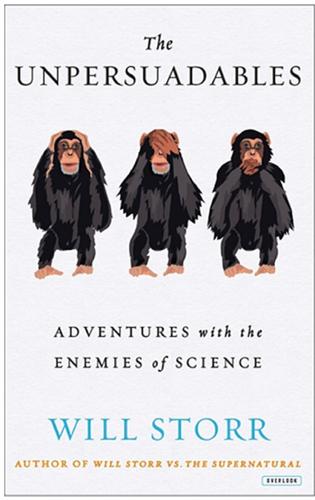
The Unpersuadables: Adventures With the Enemies of Science
by
Will Storr
Published 1 Jan 2013
‘I had to end it in six days because it was out of control. Normal healthy college students were having emotional breakdowns. Five of them had to be released early because of the cruelty and sadism of the guards towards them. It demonstrated in a powerful way how situations can overwhelm the best and the brightest.’ The Stanford Prison Experiment is a legendary study in the realm of what became known as ‘situational psychology’. It helped to reveal a terrible flaw in the way humans typically view themselves. We tend to assume that we are in control of ourselves; that inner forces such as character and conscience captain our actions and define our behaviour.
…
Holman Foundation 118 chemotherapy 35, 93 Chibnall, Albert 256, 257 chick-sexers 186–87 childhood abuse 165–72, 173–75, 176–78, 179 sexual 145, 146, 156–57, 162, 180 children 75 China 83 Christ Church, Oxford 200, 201 Christians 4, 6, 7, 133, 134 condemnation of homosexuality 14–15, 18 morality 15–16, 122 see also creationists Churchill, Winston 208, 235, 249, 250 Clancy, Susan 50 climate-change sceptics 200, 203–204, 216 Clinic for Dissociative Studies 171 Clinton, Hilary 118 Coan, Chris 166–67 Coan, Jim 166–67 cochlear implants 78 cognitive bias 85, 87–88, 90–91, 103–104, 111, 183, 186, 244, 272 see also confirmation bias cognitive dissonance 84–87, 96, 102, 181 coin toss tests 262 Colapinto, John 312 cold war 149, 212, 215 Coleman, Ron 136–37, 141, 146, 148, 157, 162, 186, 306 colour, perception of 80 Committee for the Scientific Investigation of Claims of the Paranormal (CSICOP) 275 Communists 212, 222, 249–50 con artists 107 concentration camps 220–21, 224, 230, 245 confabulation 189–90, 192–96, 203, 207, 218, 253, 307, 315 confirmation bias 85, 87, 96, 181, 182, 188, 221, 243, 246, 312 consciousness 267–68 as Hero-Maker 306 conviction, unconscious 33 Conway, Martin 201 Cooper, Alice 275 Copenhagen Climate Conference 204 Copenhagen Treaty 2009 216 core beliefs 183 cows, sacred 40 Creation Research 5 Creation Science Foundation 12 creationists 2–10, 13–19, 20, 26, 30, 100, 162, 261, 308, 310 Crick, Francis 258, 268 CSICOP see Committee for the Scientific Investigation of Claims of the Paranormal culture, power of 211, 302 ‘culture heroes’ 311 ‘culture wars’ 30, 309 Daily Mail (newspaper) 225, 228, 232 Daily Telegraph (newspaper) 243–44, 263 Dali, Salvador 275 Darwin, Charles 2, 10, 11, 94 Davenas, Elisabeth 110–11 Dawkins, Richard 2, 6, 10, 19, 94, 142, 259, 261, 271, 272, 287, 290, 308 DDT 211 de-individuation 69 deafness 78, 82 decision-making 181, 267 and emotion 184–85, 189 dehumanization 69–70 delusions 103–104, 130, 178–79, 182, 272 finding evidence for 135 and Morgellons 120 of parasitosis (DOP) 120, 122, 124, 125, 129, 162 democracy, end of 216 Demon-Marker function 308–309 depression 33, 43, 45, 128, 141, 148 Dermatologic Therapy (journal) 128 development factors 183 Devil, Australia see Gympie Diagnostic and Statistical Manual of Mental Disorders (DSM) 143, 144 dialogue-ing 149, 151–52 Diana, Princess of Wales 286 diazepam (Valium) 42 dinosaurs 13, 19 Dog World (magazine) 293–94 dogma 106–107, 258 domestic abusers 89 DOP (delusions of parasitosis) 120, 122, 124, 125, 129, 162 dopamine 155, 196 doubt 133, 257 sensitivity to 261 dragons 13 dreaming 193, 195 lucid 76 drunkenness, cultural determinants of 83–84 DSM see Diagnostic and Statistical Manual of Mental Disorders Eagleman, David 74, 79, 80, 185, 186, 192, 193, 268–69 eccentricity 310 Economist, The (weekly publications) 312 Eden 14 Eden, Anthony 208 Edward V111 208 ‘effectance motive’ 184 ego 224 dream 195 ego-bolstering, unconscious 96, 103, 181 egoists 88, 196 Eichmann, Adolf 245 Einstein, Albert 201, 285 Eliade, Mircea 302 emotions 183, 184–85, 187, 194, 305 and beliefs 188, 189, 196–97 culturally unique 83 and decision-making 184, 185, 187 see also anger; happiness energy clean 25 Enfield Gazette (newspaper) 280 Enfield Poltergeist case 280 Enlightenment 255 envy 218 epinephrine 189–90 Epley, Nicholas 88 escapology 273–74 ESP see extrasensory perception Ethics Committee of the Federal Australian Medical Association 39 European Union (EU) 212 European Union Parliament House 234 Evans, Dylan 83 Evans, Richard 224 Eve 5, 12 Eve, Mitochondrial 73 Everett, Daniel 312 evidence, denial of 221, 261 evil psychology of 69–70, 307–308 ‘supremely good’ motivations for 89 evolution 73 arguments against 2–7, 10–13 arguments for 19–20, 100–101 experimental psychology 88, 101, 142, 316 extrasensory perception (ESP) 255, 266, 274, 294 alien 24 sense of ‘being stared at’ 254–55, 258, 262 facts and belief 183 inefficiency 26 fairies 83 faith, as journey 21, 134 false memories 156, 165–70, 173–74, 178, 194 familiar, the, attraction to 183 ‘fan death’ 83 Fate magazine 281 fear 203, 205, 206 Feinberg, Todd E. 82 Felstead, Anthony 160, 164 Felstead, David 159–60, 164, 171, 175, 176 Felstead, Joan 164 Felstead, Joseph 160, 161, 164, 165 Felstead, Kevin 160, 161, 164 Felstead, Richard 159–160, 164, 176–77 Felstead family 163, 165, 166, 168, 170, 176 Festinger, Leon 85, 188 Financial Service Act 214 First World War 231 Fisher, Fleur 161, 163, 165, 166, 176, 307 Flim Flam (Randi, 1982) 271, 279, 288, 295 Flood, biblical 14 fMRI see Functional Magnetic Resonance Imaging foetal development 74 fossil record 10, 13–14, 19, 101 Fourth Annual Morgellons Conference 121–28 Fox, Kate 84 Franklin, Wilbur 282, 293 free will 193, 217, 307 as confabulation 193 French Assembly 204 French, Chris 50, 104, 108, 169, 173, 288, 315 French Revolution 204 Freud, Sigmund 171, 302 Frith, Chris 70, 77, 206, 315 Fromyhr, Liam 13 Functional Magnetic Resonance Imaging (fMRI) 71 fundamentalists 261 Garvey, James 203, 218 Gates, Bill 212 Gazzaniga, Michael 184, 190–92 Geertz, Clifford 75 Geller, Uri 99, 275, 280, 281, 287, 288, 290, 293 genes 221 genetic factors 205 and beliefs 221 and political attitude 205 and schizophrenia 145, 154 genome 205, 206 Genus Epidemicus 115 George, St, and the dragon 13 ghost-hunters 21 ghosts 104 Gilovich, Thomas 86 Gindis, Alec 277, 278 global financial crisis 213 global governance 216–217 global warming 203 gnomes 83 God 17, 202, 305 Catholic interpretations of 21 and creation 3, 4, 5–6, 10 creation of 26 Darwin’s arguments against the existence of 11 deference to 18 existence of as scientifically testable 11 knowableness of 11, 22 and morality 15 see also anti-God rhetoric Goebbels, Joseph 230, 232, 239, 245 Goenka, S.N. 57, 60, 61–63, 306 Goldacre, Ben 97 Göring, Hermann 232 Gottschall, Martin 25–26 Gottschall, Sheryl 26 governance, models of 217 Gray, Honourable Mr Justice 221, 223 Gray, John 81 Great Rift Valley 74 ‘greys’ (aliens) 23, 33 group psychology 69, 88, 197 conformity to group pressure 70, 72 and the production of evil 70 Guardian (newspaper) 6 Gururumba tribe 83 Gympie, Australia 2–7, 10, 14, 16, 22, 33–53 gympie-gympie tree 2, 19 Hahnemann, Samuel 96, 115 Haidt, Honathan 83, 184, 193, 194–95, 205, 216–17, 315 Hale, Rob 172 hallucinations 82 auditory 137, 139, 141, 144, 145 see also voice-hearing visual 152 halo effect 84 Ham, Ken 12 happiness, and religious belief 197 ‘hard problem, the’ 267 Harrow 209 Harvard University 28–29, 30, 50, 285 Hawthorne Effect 107 hearing, sense of 262 Hearing Voices Network (HVN) 137, 140–41, 154, 162 Hebard, Arthur 279, 280, 295 Hebb, Donald 266 herbal remedies 36 Hercules 302 hero, the, how your memory rebuilds you as 194, 231 hero narratives 302–303, 306–309, 311–13 parasite 307, 312 Hero-Maker 306–307, 310–311, 312, 314 Heydrich, Reinhard 245 Himmler, Heinrich 235 Himmler bunker 236, 245 Hitler, Adolf 228, 231, 238, 239, 242, 243, 244, 246, 247, 248, 151–52 Hitler Youth 204 Hitler’s bunker 238 HIV 207 see also AIDS HMS Edinburgh (ship) 231 Hoefkens, Gemma 92–95, 96–97, 115–16, 141, 142, 181, 310 Holocaust denial 155, 221, 226, 229–30, 243, 244 Homeopathic Research Institute 109 homeopathy 94–102, 105–107, 109–121, 134, 181, 269, 277, 278 evidence for 106–114, 121, 134, 269 ‘overdose’ protest against 96, 99, 105, 108–109 ‘radionic’ method 115 Homerton Hospital 132 hominins 74 Homo sapiens 73 homophobia 188 homosexuality 137 Christian condemnation of 14–15, 18 Horsey, Richard 186 Horst Wessel Song (Nazi Party anthem) 239 House of Commons Science and Technology Committee 94 Hrab, George 108 Hume, David 203 Humphrey, Nicholas 43 Huntington’s disease testing 197 HVN see Hearing Voices Network hypnotherapy and false memory generation 166 and past-life regression 44–45, 47 hypnotism 189 ‘I’, sense of 194, 196, 258 IBS seeirritable bowel syndrome Iceland 83 identity 203 ideology 272 Illuminati 286–87, 288, 304 imitation 206 immigration 206, 223 Mexican 223 in-groups 84, 133 incest 168 information field 257, 266 INSERM 200 110 intelligence, and cognitive bias 224 Intergovernmental Panel on Climate Change (IPCC) 216 International Academy of Classical Homeopathy 277 Internet 112 intuition 187, 216, 238 irritable bowel syndrome (IBS) 43 Irving, David 269, 307, 308, 209, 333–335, 344, 345 Irving, John 219, 221, 238, 244 Irving, Nicholas 243 itch disorders 117–119 see also Morgellons Jackson, Peter 312 James, William 106 James Randi Educational Foundation (JREF) 99, 260, 275, 276, 290, 294 jealousy, sexual 64, 66, 104 Jesus 142 knowableness of 11 Jewish Chronicle (newspaper) 230 Jews 221, 230, 231, 244–51, 253, 309 see also Holocaust denial Josefstadt Prison, Vienna 220 Journal of the American Medical Association 41 Journal of Clinical Epidemiology 113–114 Journal of Philosophical Studies 182 JREF see James Randi Educational Foundation Jutland, Battle of 231 Kahneman, Daniel 184, 303 Kaku, Michio 27 Kaptchuk, Ted 43 Keegan, Sir John 243–44 Keen, Montague 284 Keen, Veronica 283–88, 304 Kerry, John 87 KGB 212, 215 Kilstein, Vered 44–51, 53, 168, 305–306 King’s Cross station 136 ‘koro’ 83 Krepel, Scott 78 Krippner, Stanley 288–89, 295 Krupp 233 Kuhn, Deanna 86 Los Angeles LA Times (newspaper) 118 LaBerge, Stephen 76, 195 Labour Party 210 Lancet (journal) 109, 113 Langham, Chris 171 Lawrence, Stephen 236 Lebanese people 223 left, political 204–207, 211, 215 Leitao, Mary 118 Leitao’s Morgellons Research Foundation 118 Lemoine, Patrick 42 Lennon, John 49 Letwin, Oliver 214 Leuchter, Fred 229 Leviticus 14 Lewis, Andy 109, 114 Lipstadt, Deborah 221, 224, 243, 246, 309 Literary and Scientific Institutions Act 1854 210 Lo, Nathan 19–20, 22, 30, 100, 308 Loftus, Elizabeth 166, 173 love 44, 59 memories of 63, 133 Lucifer 4 see also Satan McCain, John 118 McCullock, Kay 23–25 McDonald’s 67–68, 84 Mack, John E. 28–30, 51, 102–103, 142, 145, 272, 284–85 Mackay, Glennys 22–23, 30, 33 Mackay, John 1, 4–6, 1–11, 15–20, 30, 33, 53, 91, 100, 109, 182, 305, 306, 308 MacLeish, Eric 29 Maddox, Sir John 271, 287 magic-makers 7 magnetometers 279 Majdanek concentration camp 224, 230 Mameli, Matteo 182 manic depression 141 Mann, Nick 130–31, 134, 162 Marianna, Dame of Malta 208 Marshall, Michael ‘Marsh’ 105–109 Marxists 210 ‘matchbox sign’ 124 materialism 256, 257–58, 259, 260–1, 266, 268–69 May, Rufus 148–49, 156, 182, 196, 304 meditation, Buddhist 52–53, 62, 182, 196 Meffert, Jeffrey 120 Mein Kampf (Hitler) 232, 233, 242 memory autobiographical 194 fallibility of 201 see also false memories; recovered- memory therapy mental illness 137, 141, 146, 147, 165 as continuum 147 depression 33, 42–43, 45, 89, 100, 120, 148, 197 manic depression 141 multiple personality disorder 165, 171, 173–74 obsessive compulsive disorder 128 sectioning 137, 140, 161 see also psychosis; schizophrenia mental models 76, 85, 87, 90, 102, 133, 142, 147, 183, 302, 303, 316 meta-analysis 112, 146, 157, 262, 267 Metzinger, Thomas 195 Mexican immigration 223 micro-stories 206 Milgram, Stanley 70–71 mind and the brain 255, 257–58, 266–67 as ‘out there’ 267 theory of 303 miners’ strike (mid-1980s) 212, 214–15 Mitchell, Joni 118 mites, tropical rat 132, 135 ‘Mitochondrial Eve’ 73 Moll, Albert 189 Monckton, Christopher Walter, 3rd Viscount Monckton of Brenchley 200, 203–205, 207–16, 218, 304, 305, 309, 310 Monckton, Major General Gilbert, 2nd Viscount Monckton of Brenchley 208 morality 193, 202 Christian 15 Morgellons 118–35, 162, 307 see also Fourth Annual Morgellons Conference, Austin, Texas morphine 41 Mosley, Sir Oswald 232 Mragowo 233 multiple personality disorder 165, 171, 173–74 murder, past-life 44, 48 murderers 89 Murray, Robin 183 Myers (formerly Felstead), Carole 159–61, 163–66, 168, 171–73, 176–80, 307 myoclonic jerk 195 myth 302, 304, 312–313 narratives hero 302–303, 306–14 master 206 nation state, end of 216 National Front 234, 305 National Health Service (NHS) 94, 148, 171 National Secular Society 5 National Union of Teachers 5 Native Americal tradition 186 Natural History Museum 132 natural selection 10 Nature (journal) 110–11, 257, 271, 287, 304 Nazi Party (German) 220, 239 Nazis 48, 89, 231, 239 Neanderthals 26 necrophilia 12, 18 neurological studies 87 neurons 74–75, 220, 253, 267 neuroscience 142 New Guinea 83 New Science of Life, A (Sheldrake) 256–57 New Scientist (journal) 257–266 New York Times (newspaper) 72, 120, 271, 272 New Yorker (magazine) 268, 312 Nix, Walte, Jr. 68 Noah 3, 5, 13, 14 Novella, Steven 107, 112, 120, 135, 272, 287, 309 Oaklander, Anne Louise 129–130 Oatley, Keith 303 Obama, Barack 118, 286 obedience studies 84 Observer (newspaper) 222, 257 obsessive compulsive disorder (OCD) 128, 147 Oedipus 302 Offer, Daniel 194 Ogborn, Louise 67–68, 70, 84 Olsen, Clarence W. 82 openness 205 Origin of Species, The (Darwin) 2, 4 original sin 3 Orkney 166 ‘other people’, judgement of 67 out-groups 69, 105 Oxford Union 203, 207, 218 paedophilia 15 pain perception of 41 and the placebo effect 41, 42–43 palm reading 105 paranoia 30, 64, 150, 154, 178, 180 parapsychology 261–62, 265–67, 269, 279, 280, 287 past-life regression (PLR) 44–45, 47, 53, 168, 170 Patanjali Yog Peeth Trust 31 Paul McKenna Show, The (TV show) 263 Pearson, Michele 119 penis ‘koro’ effect 83 phantom 82 Penn and Teller 271, 290 perception and the brain 72, 76 of pain 41 and the placebo effect 41, 42, 43 of reality 27, 72, 76–77, 80, 81 see also extra-sensory perception peripeteia 303 Perkins, David 244 personality disorder 165 see also multiple personality disorder pesticides 211 Peter March’s Traveling Circus 274 Peters, Maarten 50 ‘phantom limbs’ 82 ‘Pagasus’ awards 260, 276, 288 Pirahã tribe 312 placebo effect 41–43, 45–46, 50–51, 53, 72, 107, 113, 134 and homeopathy 107, 113, 134 Playfair, Guy Lyon 280–82, 287, 293 political affiliation 205 political beliefs, and self-interest 217 political left 204, 206, 210, 211 political right 204, 205 Polonia Palace Hotel, Warsaw 219 poltergeists 280 Popoff, Peter 288 power, leftwing 211–12 Power, Joe 105, 106 ‘Pranayama’ (breath control) 32–36, 38, 40, 41, 45, 56, 134, 196 prefrontal cortex 73 prejudice 29, 53, 84, 86, 90, 100, 181, 248, 305 Pressman, Zev 280–82, 286, 288, 295 prophets 307 Prozac 42 psi phenomena 265–66 see also parapsychology psychiatry 28–29, 42, 71, 120, 130, 136, 137, 140–41, 142–43, 145–46, 150, 152, 162, 183, 189 psychic powers 253 animals with 258, 260, 261, 265, 266 testing 253, 258, 260, 263, 274, 279–80 psychics 98, 104 psychology of evil 69–70, 105, 243, 307 experimental 88, 101, 142, 316 parapsychology 261–62, 265, 266, 267, 269, 280, 287 situational 69 see also schizophrenia 157, 180, 310 Puthoff, Harold 279, 280 racism 104, 221, 223, 229, 305 radiotherapy 35, 401 Ramachandran, V.S. 75, 81, 82 Ramdev, Swami 31–41, 43, 134, 182, 306 Randi, Angela 291 Randi, James 98–99, 107, 108, 109–110, 112, 260–61, 269, 270, 271–98, 306, 309, 310, 312, 313 blindness to his own cognitive biases 272 childhood 273 death threats 275, 306 early adult life 274 emotional problems 292 homosexuality 292 interview with the author 291–98 psychic challenge prize 99, 260, 272, 276, 277, 278, 289 social Darwinism 296, 297 views on drug users 296–97 see also James Randi Educational Foundation Rank, Otto 302 Rasputin study 88, 103 rationalists, radicalised 9 reality, perceptions of 27, 72, 76–77, 80, 81, 91 ‘reality monitoring’, errors in 50 reason 26 inefficacy of 26–27 as not enough 309 recovered-memory therapy (RMT) 166, 170, 173, 176 Rees, Laurence 311 ‘regression to the mean’ 45 religious belief, and happiness 197 religious conversion mechanisms of 8 repression 169 right, political 204–207 Robertson, Shorty Jangala 300 robots, alien 23, 33 Rogo, Scott 279 Romme, Marius 137, 140, 143–45, 148, 154, 155 Rosenbaum, Ron 245 Royal College of Psychiatry 154 Royal Free Hospital, Camden 136, 139 Royal Institute of Philosophy 203 Royal Society 5 saccades 79 sacredness, irrationality surrounding 217 Sagan, Carl 266 Santayana, George 209 Satan 18 see also Lucifer santanic abuse 165–66, 168–70, 174–75, 177, 180 Saucer Smear magazine 281 Savely, Ginger 126, 127, 130 Schizophrenia 51, 136–37, 140, 141, 143, 145, 148, 150, 154, 162, 169, 178, 183, 309 as salience disorder 183 Schlitz, Marilyn 262 Schmidt, Stefan 262, 265 Schwartz, Gary 287, 188–89 science 8–9, 95–96, 255–59, 268, 273, 310 scientific method 305 Scientologists 155 sectioning 137, 140 Secular Student Alliance 290 Seeman, Mary 120 Segal, Stanley S. 172 self ideal 148, 313 multiple selves model 147 senses 77–91, 190, 196, 258 sensory deprivation 78 sexism, unconscious 86 sexual abuse 145, 146, 156–57, 162, 180 sexual assault 145–46 sexual jeaoulsy 64, 66, 104, 212 Shang, Aijing 112, 113–14 Sheldrake, Rupert 255–61, 262–70, 272–73, 276–77, 287, 289, 293–94, 307 Shermer, Michael 102 Silent Spring, The (Carson) 211 sin 17–18, 61, 66, 189 original 2 Sinason, David 171, 175, 179 Sinason, Valerie 170, 171, 178, 180, 304 Singer, Peter 304 situational psychology 69 Skeptic, The (magazine) 104, 108, 169, 271, 288 Skeptics 9, 95–112, 115, 120–21, 134, 142, 162, 260, 265, 271–73, 276–79, 290–91, 298, 309–310, 313–14 and Morgellons 134 and psi phenomenon 265–66, 279 and Sheldrake 260 ‘The Amazing Meeting’ of 290 see also Randi, James sleep 195 smell, sense of 184 Smith, Greg 122, 124, 130, 131 social Darwinism 296, 297 social roles, and the production of evil 69–70, 105 socialism 212 Sorel, George 304 ‘source-monitoring error’ 50 South Koreans 83 Soviet Union 212 sprinal tumours 129 spirituality 26 ‘split-brain’ patients 190–92 spoon-benders 98 spotlight effect 89 Stalin, Joseph 234 Stanford Prison Experiment 69–70 Stern Review 310 Stipe, Catherine 6 storytelling 183, 188, 189, 192, 194, 302, 206, 207, 312 see also confabulation; narratives ‘strip-search scams’ 68–69, 84 stroke patients 82 suicidal ideation 147 suicide 144 and voice-hearing 151, 154 Summers, Donna 67 survival of the fittest 3, 296–97 taboo violation scenarios, harmless 194 Targ, Russel 279, 280 Tavris, Carol 84, 88, 194, 243 Tea Party movement 204204 telepathy 257–59, 266, 269, 280 terrorism 9 Thatcher, Margaret 174, 204, 208, 212, 215 theft 66, 104 theory of mind 303 therapy 45, 169 group 133 placebo effect 45 This American Life (US radio show) 78 Thyssen 233 Time magazine 102 Times, The (newspaper) 263 ‘tjukurpas’ (Aboriginal stories) 275 Toronto Evening Telegram (newspaper) 274 Toronto Star (newspaper) 293 totalitarianism 216 Tournier, Alexander 109, 112, 113 traumatic experience repression 166 and voice-hearing 137, 139–41, 143–45, 148–49, 150–58 tribalism 84–85, 133, 171, 196, 217 truth 218 coherence theory of 218 and group pressure 44–45 and storytelling 312–13 Turing, Alan 266 Turner, Trevor 154–57, 162, 169, 178 twin studies 205 UFOs 22–27, 29–30, 272, 308 UK Independence Party (UKIP) 204 Ullman, Dana 107, 112, 309 Ultimate Psychic Challenges, The (TV Show) 284 unconscious 33, 44, 58–59, 60, 41–42, 183–88, 194, 269–70, 304 United Nations (UN) 216, 304 US Armed Forces Institute of Pathology 119 Vipassana Meditation Centre 52–53, 55, 57, 70 vision 79–80, 92–93, 96 Vithoulkas, George 99, 277–79, 295–96 voice-hearing 136–45, 148–59, 162, 169, 180 Wade, Kimberly 168–69 Warren, Jeff 76 Washington Post (newspaper) 120, 328, 344 water dreaming 300 Watson, Rebecca 107 ‘we mode’ 70 Wegner, Daniel 193, 331 welfare state 209–10 Western, Drew 87, 204, 206–7 Western medicine, disillusionment with 36, 39–40, 182, 306 Wexler, Bruce E. 75, 183, 185, 303 ‘wild pig, being a’ 83 Wilson, David Sloan 304 Wilson, Timothy D. 81 Wired (magazine) 271 Wiseman, Richard 259–66, 271–72, 287, 290, 335–37 Wolpert, Lewis 183–84, 189, 259, 313 Wootton, David 42 wormholes 27 Wymore, Randy 121–22, 124, 126, 128 yoga 31–39 Yuendumu 299–300 Zimbardo, Philip 68–70, 72, 104 WILL STORR is a novelist and longform journalist.

Operation Chaos: The Vietnam Deserters Who Fought the CIA, the Brainwashers, and Themselves
by
Matthew Sweet
Published 13 Feb 2018
I imagined a room of sober young men passing resolutions against the military-industrial complex. Now I think of it as a phenomenon of a different order. Something through which we might read the times, like the psychedelic bus trip undertaken by Ken Kesey and the Merry Pranksters; or the Stanford Prison Experiment, inside which the psychologist Philip Zimbardo barricaded a group of impressionable boys and watched them sink into barbarism. To describe the experiences of all those whose lives were touched by the committee would require more than a book. It would require an immense illuminated map of the world, and an army of uniformed croupiers pushing stacks of color-coded tokens in the direction of Sweden.
…
Shunning process Sigal, Clancy Sigerson, John Sigerson, Renee Simpsons, The (TV show) Singing Callicoats 681st Glider Field Artillery Battalion Sjörgren, Olle Sjöwall, Maj Small Giants (Burlingham) Smith, Parker Soble, Jack Social Democratic Party (Denmark) Social Democratic Party (Sweden) Socialist International Socialist Workers Party (SWP) Södermalm district Sons of the American Revolution Sontag, Susan Soros, George Soviet Afro-Asian Solidarity Committee Soviet Education Soviet Embassy (Tokyo) Soviet Psychology Soviet Union (USSR). See also Russia Spain Spannaus, Edward Spannaus, Nancy Spång, Klas-Örjan Special Operations Group (CIA) Speed, Dennis Spender, Stephen Spicer, Sean Spock, Benjamin Spray, Archibald (Marshall Zolp) Stalin, Joseph Stallone, Sylvester Standard Oil Company Stanford Prison Experiment Stasi State Department Staton, Billy Steinbeck, John Steppenwolf St. John Bosco High School Stockholm Stockholm Research Collective Stockholm University Stone, Roger Strategic Defense Initiative (SDI, “Star Wars”) 175 Strollo, Vincent Students for a Democratic Society (SDS) Suall, Irwin Suburban Life Sullivan, Ed Svahnström, Bertil Swarthmore College Sweden deserters find asylum in draft resisters find exile in EAP and elections of 1968 elections of 1979 elections of 2014 GLADIO and Palme assassination and political neutrality of public cools toward American exiles in Vale moves to welfare state withdraws asylum for deserters Sweden: Heaven and Hell (film) Swedish Aliens Commission Swedish anti-war movement Swedish Committee for Vietnam Swedish Death Index “Swedish Deserters” (CIA précis) Swedish Film Institute Swedish intelligence Swedish Ministry of the Interior Swedish National Archives Swedish police Sylvia, Robert Symbionese Liberation Army Syvriotis, Nick Takman, John Talbott, Strobe Tarpley, Webster Tate, Charles Tavistock Institute Taxi Driver (film) Taylor, Thomas Tegin-Gaddy, Kerstin Temple University, Third World Solidarity rally Terrorists, The (Sjöwall and Wahlöö) Terry Whitmore, for Example (film) There Are No Naughty Children (Israel and Israel) They Would Have Died Anyway (Ekberg) Third State of Imperialism, The (LaRouche) Thorsson, Inga Three Fs of Charm, The (Foley) Tibet Tidsignal (student newspaper) Time Time to Live, A (film) Tito, Josip Broz Tokyo University Tomkiewicz, Stanislaus Torres, Jose Torsåker farm torture Tracy, Spencer Trap, The (TV drama) Treml, Vladimir Triangle Shirtwaist Factory Trier, Lars von Trotsky, Leon Trotskyists Trotsky: The Prophet Armed (Deutscher) Trump, Donald Trump, Melania Tuesday (newspaper supplement) Turgenev, Ivan Turk, Larry Turkish-Syrian border Turner, Stansfield Tyresö suburb UFOs Ukraine Ulvaeus, Björn Umiliani, Piero Underground Railway Underwood, Lamont Claxton Union of American Exiles in Britain United Committee of South Slavic Americans United Nations Conference on the Human Environment United Press International (UPI) U.S.
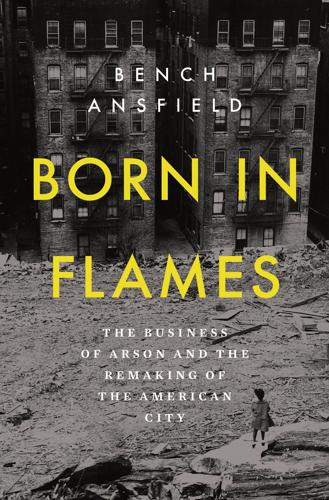
Born in Flames
by
Bench Ansfield
Published 15 Aug 2025
But in Wilson and Kelling’s essay, only one empirical source shoulders the evidentiary burden of proving the connection between one broken window and “a thousand broken windows”—of proving, in other words, the connection between visual cues of disorder and neighborhood deterioration. That source was an experiment conducted fifteen years earlier in both the Bronx and Palo Alto by social psychologist Philip G. Zimbardo, best known for administering the Stanford prison experiment two years later.52 In 1969, Zimbardo, a Stanford professor raised in the Bronx, set about determining the relationship between community anonymity and vandalism. He and his research team installed a 1959 Oldsmobile in both the South Bronx and Palo Alto, removing the vehicles’ license plates and raising their hoods to create the appearance of abandonment.
…
.: Grand Concourse; Morrisania neighborhood arson blamed on residents of, 29, 120, 124 Jimmy Carter’s visit to, 114, 162–63, 166, 168, 178, 181, 211, 233, 233–34, 237, 239, 245 extraction by landlords in, 84 fire watching in, 101, 102–9, 105 fireproof housing in, 80–81 gentrification of, 190 landlord abandonment in, 62–63, 229 legacy of interracial solidarity in, 53 New York FAIR plan in, 49 NYPIUA payouts for losses in, 92 Occupied Look program in, 190–92 and “planned shrinkage,” 55–56 police presence in, 189 refugees in and from, 113–15 revitalization efforts in, 200–2, 240, 245–46 as symbol of America’s urban ruin, 107–9, 162, 163, 166, 168, 185, 261, 303; see also Fort Apache, the Bronx (1981 film) tourism in, 163, 168, 216 as tourist destination, 163, 216 unemployment in, 78 as uninsurable area, 248, 251 vandalism in, 185 as welfare dumping ground, 128 Philip Zimbardo’s “anonymity” experiment in, 186–87 South Bronx Development Organization (SBDO), 182, 245 South Bronx Overall Economic Development Corporation (SoBro), 260, 261 South Bronx Rising (Jonnes), 306 South East Bronx Community Organization (SEBCO), 106, 238, 241, 244 South Fordham neighborhood (Bronx), 98, 219 South Fordham Organization, 98 Southeast Asian refugees, 316, 324 Southern Boulevard (Bronx), 3–4 Southern District of New York, 147, 202 Soviet Union, 4, 216 Special Portfolio, 147, 148 Spielberg, Morris, 31 squatters, 229 Stanford prison experiment, 186 Stanford Research Institute, 204 Stanford University, 186, 187, 276 Star-Ledger (Newark), 31 Starr, Roger, 55, 185, 232 State Farm, 252, 253, 256 state-based insurance regulation, 25, 30, 253; See also McCarran-Ferguson Act (1945) statistics, 42, 86, 119, 124, 125, 129, 223, 275–76 Statue of Liberty, 133, 134 Steinbach, Carol, 225 Sterling, Lee, 63 Sternlieb, George, 64 Stevenson, Gelvin, 84 STOP.

The Better Angels of Our Nature: Why Violence Has Declined
by
Steven Pinker
Published 24 Sep 2012
Group animosity: Hoyle, Pinkley, & Insko, 1989; see also Baumeister, 1997, 193–94. 266. Obedience experiments: Milgram, 1974. 267. Fact and fiction about Kitty Genovese: Manning, Levine, & Collins, 2007. Bystander apathy: Latané & Darley, 1970. 268. Stanford Prison Experiment: Zimbardo, 2007; Zimbardo, Maslach, & Haney, 2000. 269. No Germans punished for disobedience: Goldhagen, 2009. 270. Milgram replication: Burger, 2009. See Reicher & Haslam, 2006, for a partial replication of the Stanford Prison Experiment, but with too many differences to allow a test of trends over time. 271. Obedience might be even lower: Twenge, 2009. 272. Advantages of conformity: Deutsch & Gerard, 1955. 273.
…
One component of the human moral sense, amplified in many cultures, is the elevation of conformity and obedience to praiseworthy virtues. Milgram ran his experiments in the 1960s and early 1970s, and as we have seen, many attitudes have changed since then. It’s natural to wonder whether Westerners today would still obey the instructions of an authority figure to brutalize a stranger. The Stanford Prison Experiment is too bizarre to replicate exactly today, but thirty-three years after the last of the obedience studies, the social psychologist Jerry Burger figured out a way to carry out a new one that would pass ethical muster in the world of 2008.270 He noticed that in Milgram’s original studies, the 150-volt mark, when the victim first cries out in pain and protest, was a point of no return.
…
E., Robinson, E., Gerelsaikhan, T., Dashnyam, B., Mehdi, S. Q., & Tyler-Smith, C. 2003. The genetic legacy of the Mongols. American Journal of Human Genetics, 72, 717–21. Zimbardo, P. G. 2007. The Lucifer effect: Understanding how good people turn evil. New York: Random House. Zimbardo, P. G., Maslach, C., & Haney, C. 2000. Reflections on the Stanford prison experiment: Genesis, transformations, consequences. In T. Blass, ed., Current perspectives on the Milgram paradigm . Mahwah, N.J.: Erlbaum. Zimring, F. E. 2007. The great American crime decline. New York: Oxford University Press. Zipf, G. K. 1935. The psycho-biology of language: An introduction to dynamic philology.

The People vs Tech: How the Internet Is Killing Democracy (And How We Save It)
by
Jamie Bartlett
Published 4 Apr 2018
Fortunately Daniel Kahneman, the academic most associated with examining bias in human decision-making, did. Through decades of empirical research with long-time collaborator Amos Tversky, he pioneered the study of how we take decisions – and especially irrational ones. I won’t recite the Stanford Prison Experiments or the Ultimatum Game, but Kahneman’s main point was that there are two basic systems that govern human behaviour. ‘System one’ thinking is fast, instinctive and emotional. It’s the reptilian brain, running on instinct. By contrast, ‘system two’ thinking is slow, deliberative and more logical.7 It sometimes, but not always, acts as a check on those wilder rages.

Palo Alto: A History of California, Capitalism, and the World
by
Malcolm Harris
Published 14 Feb 2023
He takes clear pride in how influential his little play has become, and he was certainly rewarded, including with Lewis Terman’s old chairmanship of the American Psychological Association. If you think of this situational evil as a kind of demonic possession, it makes sense not to feel too bad about being a host, but Zimbardo created the situation, or at least part of it. The Stanford Prison Experiment is supposed to be a lesson about a species (humans) rather than a place, but generalizing from the behavior of young men in Palo Alto is unscientific. Part of the play’s drama comes from the contrast: Look at these nice college boys and how quickly they turn to monsters! But the experiment was in Jordan Hall.
…
Stanford’s whole existence as the exemplary Cold War university depended on its relationship with the Department of Defense, and its relationship to the DOD was mediated through one of the department’s branches. Universities negotiate aspects of their overall relationship with the department through a single agency, and Stanford worked with the Office of Naval Research—the same one that helped the school build out the campus’s postwar facilities, the same one that financed the infamous Stanford Prison Experiment and who knows what else. For many decades that relationship was exceedingly cozy, leading to the aforementioned millions of dollars in annual grants, and Stanford got really good at getting the most out of those awards. When universities get grants, the schools charge the granting institution a fee for indirect costs—cleaning the buildings, keeping the lights on, and other expenses—so for every dollar, the university gets an extra fraction for its overhead.
…
Hiltzik, Dealers of Lightning, 336; Markoff, What the Dormouse Said, 79. 46. Martin A. Lee and Bruce Shlain, Acid Dreams: The CIA, LSD, and the Sixties Rebellion (New York: Grove Press, 1985), 198–99. 47. Philip G. Zimbardo, The Lucifer Effect: Understanding How Good People Turn Evil (New York: Random House, 2008), 236. 48. “Stanford Prison Experiment, August 15–21, 1971,” video recordings, Stanford Libraries, https://exhibits.stanford.edu/spe/browse/video-recordings. 49. Zimbardo, The Lucifer Effect, 97. 50. Ibid., 111. 51. Ibid., 39. Chapter 3.4 How to Destroy an Empire 1. The Pentagon Papers (Boston: Beacon Press, 1971), 1. 2.
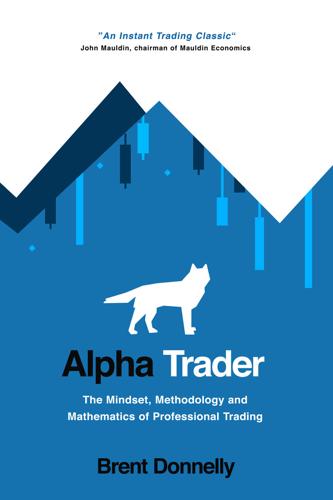
Alpha Trader
by
Brent Donnelly
Published 11 May 2021
When humans have incomplete knowledge, their instinct is to follow the group. Many people in the Asch experiment did not follow the group, but the experiment involved an easy question with an obvious answer. Everyone should have answered correctly yet almost 37% of people did not. Google “Stanford Prison Experiments” for another example of the astonishing levels of conformity observed in experimental settings. In markets, where incomplete information and group behavior are an intrinsic part of the game, you need to make sure you are always thinking for yourself. Don’t get caught up in the CNBC (bullish) or Twitter (bearish) hype or get sucked in by what the “smart guy at the big hedge fund” wrote in his opinion piece in the FT.
…
Covey), 95, 491 Seykota, Ed, 388 Sharpe, Steven A., 228—229 Sharpe ratio, 114, 139, 150, 160, 161, 162, 396 Shiller, Robert J., 247, 491 signals, 156, 234, 239, 317, 334, 336, 346, 392, 415 bearish, 218 breakout, 161 bullish, 336, 337, 338 cross-market, 261 for FX traders, 315 high volumes, 329 overbought and oversold, 340, 341, 443 price action, 161, 162 private, 185 public, 185 reversal, 341, 443 reversion, 443 See also doji; hammers significant reference points (SRPs), 325—331 NewsPivots, 305, 325-327, 330, 368, 408, 431 support and resistance, 327—331 silver, 425 skeptic, healthy, 103, 259 skepticism, healthy trader and financial press, 242 as trader attribute, 103—104 versus cynicism, 259 skew, 341 skill, trader success and, 23, 42, 58, 72, 75, 349, 351—352, 363, 380—381, 434 analytical, 69 estimating probability, 79, 211 filtering, 302, 306 focus, 136 quantitative, 104 risk management, 349 slippage, 40, 155 Snowberg, Erik, 209 sophomore jinx, 204 Soros, George, 87, 301 Soto, Christopher, 48 Spearman’s positive manifold, 63 sports. See success, sport Sports Illustrated jinx, 204 spreads, 276—278 squirrel-chasing bias. See chasing bias Stanford Prison Experiments, 83 Stanovich, Keith, 62—63 stealing thunder technique, 202 stimulation, trading for, 157, 188 See also overtrading; sensation-seeking traders stochastics, 338, 341 stock indexes, 477 stock market, Canadian, 473 stock market, U.S., 42, 163, 222, 253, 260, 263, 278, 290 bullish retail hysteria in, 427 COVID-19 and, 331, 425 crash predictions, 264—265 sentiment surveys and indicators, 345 statistics, 265 VIX and, 427 See also bubbles; Flash Crash of 2010; NASDAQ; Reminiscences of a Stock Operator; S&P 500 stocks, 260-265 bad economic news and, 263—264 gold and, 262—263 total return of bonds and (Jan to Oct 2020), 261 up more than down, 265 versus bonds, 260—261 See also NASDAQ; S&P 500 StockTwits, 267 stop losses, 227 automated, 105—106, 134, 157, 392 determining, 392, 413, 414 discipline, 57 on the downside, 119 trade executions and, 422—423 trigger, 195 See also stop losses, daily stop losses, daily, 116 day traders and, 367, 368 junior institutional traders and, 368 retail traders and, 368 strategy, trading, 323, 331, 413 evaluating, 101 See also specific trading strategies stress management ability, 34, 72, 481 as trader attribute, 75, 104, 131—135 stress testing, 118 Strowger, Vanessa, 69 success, 43—49, 51—54, 58, 71 avoidance of negative outcomes and, 43 birth month and, 53, 54 educational achievement and, 43, 51, 52, 58 effort and, 52 environment and, 52 formula for, 58 happiness and, 43 health and, 43 income and, 43 IQ and, 44—46 longevity and, 43 luck and, 52—53, 58, 71 personality and, 46—49 skill and, 52, 58, 71 talent and, 52, 58, 71 See also conscientiousness; success, financial; success, sport; success, trading success, financial, 49—53 Big Five Personality Traits and, 49—51, 52 birth month and, 53 success, sport, 43, 51, 52, 58 birth month and, 53, 54 success, trading, 37, 469 bank traders, 40 day traders, 41—42 environment and, 52 financial literacy and, 71 hedge fund traders, 40 high intelligence and, 71, 72 luck and, 54, 55 numeracy and, 71 professional investors, 42 rationality and, 61, 62, 66—72 rate, 40—42 recipe for, 142, 494 research, 66—71 self-control and, 71 See also alpha trader; trader attributes, positive cognitive; trader attributes, positive miscellaneous; trader attributes, positive non- cognitive Success Equation, The (M.
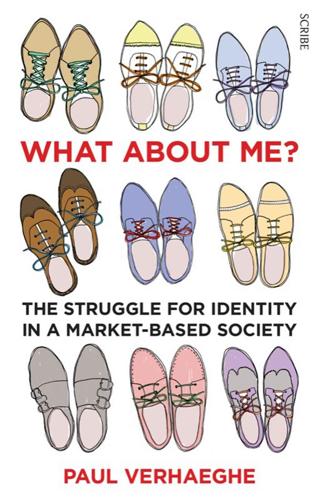
What About Me?: The Struggle for Identity in a Market-Based Society
by
Paul Verhaeghe
Published 26 Mar 2014
Introduction 1 The best known is the 1963 experiment by Stanley Milgram, in which, after a certain amount of prompting, ordinary people gave dangerous electric shocks (or so they thought) to individuals taking part in what they had been told was a ‘learning experiment’. Around ten years later, Philip Zimbardo carried out his Stanford prison experiment, in which students took their roles as guards so much to heart that it became an Abu Ghraib avant la lettre. Chapter Three: The Perfectible Individual 1 Kołakowski, 2007. Two quotations: ‘… and the possessors of universal truth know that they have access not only to inviolable (“scientific”) knowledge of all essential human affairs but also to the precepts of a perfect society’ (p. 45); ‘Many have pointed out that the principles of empiricism are not themselves empirical propositions.
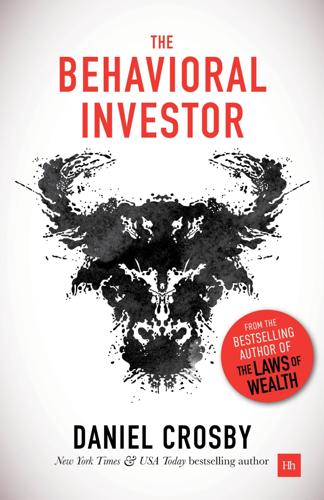
The Behavioral Investor
by
Daniel Crosby
Published 15 Feb 2018
One of the most infamous psychological studies ever conducted, commonly cited to demonstrate the corruptive influence of power, also serves as a powerful tutorial on the human tendency to reify the present and project it into the future indefinitely. Any Psych 100 course is likely to feature discussion about the Stanford prison experiment – a mock prison set up in the basement of the psychology department to study the impact of the power differential between prisoners and their guards. Twenty-four men, mostly white, mostly middle class, were recruited for the study and were arbitrarily assigned to either a “guard” or “prisoner” condition.
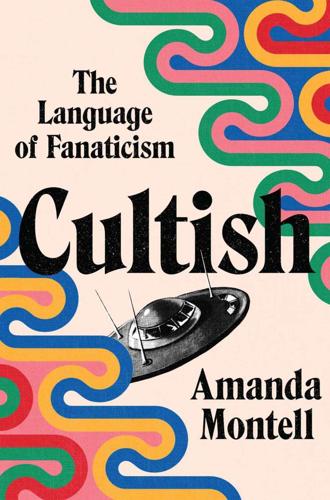
Cultish: The Language of Fanaticism
by
Amanda Montell
Published 14 Jun 2021
Personally, I don’t see the appeal (unpopular opinion, I guess, but Jones’s blocky, cartoonish features have always reminded me a little of Biff Tannen, the bully from Back to the Future). I suppose deranged murderers might just not be my type, though I know that hybristophilia, an attraction to brutish criminals, is a very real thing. Jones, Ted Bundy, and Charles Manson all had groupies. Even the famous psychologist Philip Zimbardo, the guy known for the Stanford Prison Experiment, openly commented on Jones’s irresistible “sexual appeal.” But sex appeal isn’t just looks—it’s an ability to craft the illusion of intimacy between yourself and your fans. That’s what Jonestown expats remember. Each one I spoke to rhapsodized about the man’s impossible charm, his knack for seamlessly relating to anyone, from white upper-middle-class bohemians to Black folks active in the church.
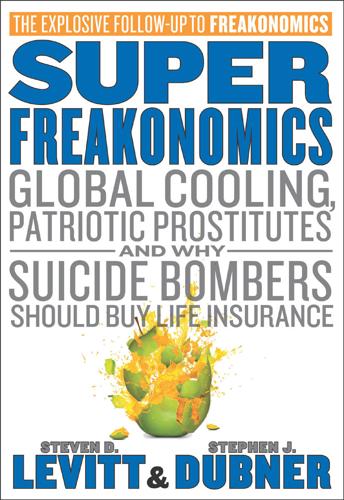
SuperFreakonomics
by
Steven D. Levitt
and
Stephen J. Dubner
Published 19 Oct 2009
Orne, “On the Social Psychological Experiment: With Particular Reference to Demand Characteristics and Their Implications,” American Psychologist 17, no. 10 (1962). / 123 “Why Nazi officers obeyed”: see Stanley Milgram, “Behavioral Study of Obedience,” Journal of Abnormal and Social Psychology 67, no. 4 (1963). / 123 The Stanford prison experiments: see Craig Haney, Curtis Banks, and Philip Zimbardo, “Interpersonal Dynamics in a Simulated Prison,” International Journal of Criminology and Penology 1 (1973). “IMPURE ALTRUISM”: Americans as top givers: see “International Comparisons of Charitable Giving,” Charities Aid Foundation briefing paper, November 2006.
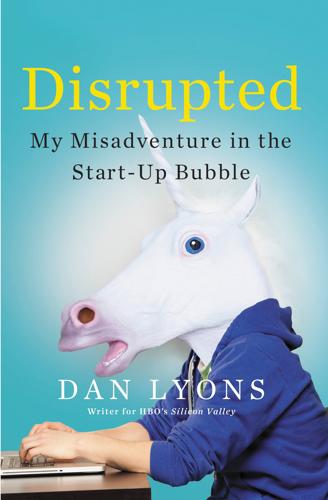
Disrupted: My Misadventure in the Start-Up Bubble
by
Dan Lyons
Published 4 Apr 2016
I try to distance myself from the abuse. I pretend I’m an anthropologist. How does the tribe behave when the chief has decided that one of the members must be driven off? I imagine that I’m a research psychologist and that the HubSpot marketing department is a laboratory exercise, a corporate version of the Stanford prison experiment or the Milgram experiment at Yale. I imagine that I am studying the way a corporate department goes about getting rid of an unwanted employee, using myself as the subject of the experiment. I’ve heard horror stories about people who have gone through this, but I’ve never experienced it myself, and I don’t know how it is done, specifically.
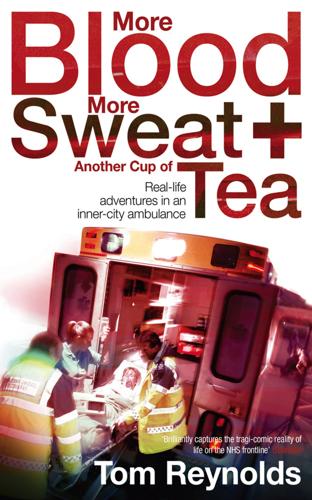
More Blood, More Sweat and Another Cup of Tea
by
Tom Reynolds
Published 30 Apr 2009
I’m guessing that a lot of you are aware of the Milgram experiment, where members of the public more willingly follow instructions if the giver is wearing a uniform or other symbol of authority. (Go to the internet for a more complete explanation. If you’ve never heard of this experiment, it and the Stanford prison experiment make scary reading.) So when I am wearing my uniform I am more confident and can order people around. The police, firefighters and members of the public tend to do what I tell them if there is someone sick around. Obviously I only use these powers for the force of good, but without my uniform I am a much shyer person.
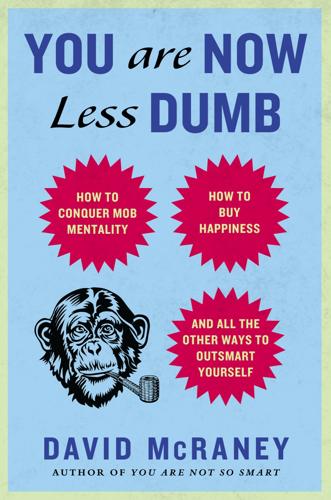
You Are Now Less Dumb: How to Conquer Mob Mentality, How to Buy Happiness, and All the Other Ways to Outsmart Yourself
by
David McRaney
Published 29 Jul 2013
Across the board, teachers rated learners who received insults as having less attractive personalities than the ones who got encouragement. The teachers’ behavior created their perception. You tend to like the people to whom you are kind and to dislike the people to whom you are rude. From the Stanford Prison Experiment to Abu Ghraib, to concentration camps and the attitudes of soldiers spilling blood, mountains of evidence suggest that behaviors create attitudes when harming just as they do when helping. Jailers come to look down on inmates; camp guards come to dehumanize their captives; soldiers create derogatory terms for their enemies.
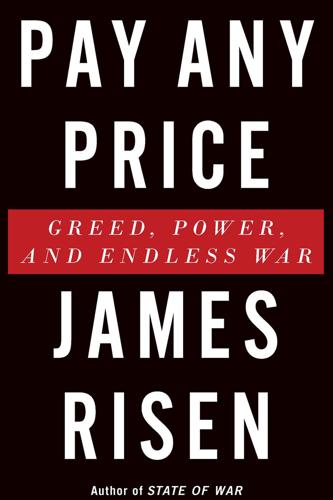
Pay Any Price: Greed, Power, and Endless War
by
James Risen
Published 15 Feb 2014
“Absolutely, there is a consensus in the psychological profession that this was no way to gather accurate information,” agreed Saul Kassin, a psychology professor at the John Jay College of Criminal Justice in New York. “There is certainly no scientific basis for believing it.” “It was right out of Clockwork Orange,” added Philip Zimbardo, a professor emeritus at Stanford University. Zimbardo is a legend among American psychologists. He developed a worldwide reputation with the so-called Stanford prison experiment, in which students were assigned to be either guards or prisoners in a mock prison set up at Stanford in the 1970s. The experiment had to be ended abruptly after it became clear that the role-playing led the students pretending to be guards to quickly become abusive. No one has a more authoritative voice on issues related to the psychology of detention and interrogation than Zimbardo.
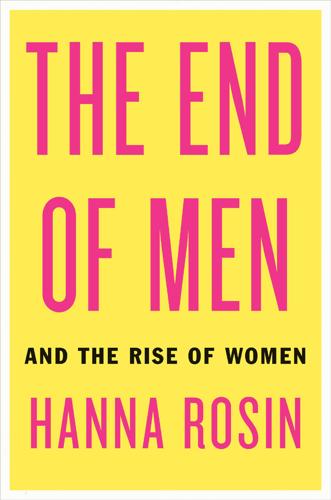
The End of Men: And the Rise of Women
by
Hanna Rosin
Published 31 Aug 2012
(Although true to gender stereotype, the women rated themselves as worse at the game than the men did, and reported that they behaved less aggressively than they actually did.) The study was crude in its very literal and narrow definition of violence—dropping (pretend) bombs. And the results were not necessarily unexpected. Earlier studies, including the famous Stanford Prison Experiment, showed that when people took on deindividuated “roles” they could carry out more violence than they would when unmasked. (Anyone who has watched kids in Darth Vader costumes can attest to that.) But in the context of gender, it took a very crude and straightforward study to raise an important point.
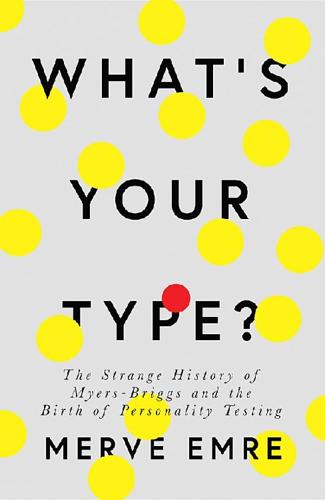
What’s Your Type?
by
Merve Emre
Published 16 Aug 2018
Murray and MacKinnon’s Improvisations anticipated, by several decades, Stanley Milgram’s 1961 experiments on the conflict between obedience to authority and personal conscience, in which volunteers, playing the role of a “teacher,” were directed to administer increasingly powerful shocks to a screaming “learner” when he answered questions incorrectly, and Philip Zimbardo’s 1971 Stanford prison experiment, in which college students assigned to play the role of prison guards abused and tortured college students assigned to play the role of prisoners. More immediately, Station S’s role-play resonated with critical theorist and German émigré Theodor Adorno’s theories of fascism, which he was developing at the same time Murray and MacKinnon were watching their test subjects scream and slap and pretend to shoot one another in the basement of the Willard estate.
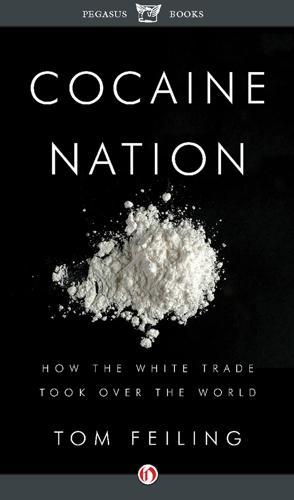
Cocaine Nation: How the White Trade Took Over the World
by
Thomas Feiling
Published 20 Jul 2010
‘Clinton’s Crack Cocaine Apology’, Huffington Post. 50. Johnson, Golub and Dunlap, ‘The Rise and Decline of Hard Drugs’, in Blumstein and Wallman (eds), The Crime Drop in America, p. 184. 51. Craig Haney and Philip Zimbardo, ‘The Past and Future of US Prison Policy: Twenty-five Years after the Stanford Prison Experiment’, American Psychologist, Vol. 53, No. 7 (July 1998), p. 716. 52. Marc Maurer, Race to Incarcerate (New York: New Press, 1999), p. 185. 53. Observatoire Géopolitique des Drogues, ‘The World Geopolitics of Drugs 1998/1999’ (Paris, France: OGD, April 2000), p. 133. 54. According to Maia Szalavitz, a senior fellow at the media watchdog STATS who has written extensively about drug policy. 55.

Competition Overdose: How Free Market Mythology Transformed Us From Citizen Kings to Market Servants
by
Maurice E. Stucke
and
Ariel Ezrachi
Published 14 May 2020
In subsequent versions of the experiment (there were nineteen in all) Milgram varied the external situational factors to determine the extent to which they altered the degree of obedience.51 Milgram wasn’t really using these experiments to test learners’ memory, but subjects’ compliance. Unbeknownst to the teachers, the learner was actually working with Milgram and was not in fact receiving any shocks. Like the social psychologist Philip Zimbardo, the pioneer of the famous Stanford prison experiment, Milgram was trying to identify the situational factors that enable ordinary people to commit evil acts. Why do we mention Milgram’s and Zimbardo’s experiments? Because six of the ten situational factors they identified that led their subjects to commit such horrendous acts could have led us down the path to the dark side of competition (and did).52 One situational factor is to present basic rules that seem to make sense before they are actually put into practice, and then to use them “arbitrarily and impersonally to justify mindless compliance.”53 The way Milgram’s experiment was explained to participants made sense initially (using the effect of a slight penalty—a mild shock—as an incentive to remember).

Actionable Gamification: Beyond Points, Badges and Leaderboards
by
Yu-Kai Chou
Published 13 Apr 2015
Parallel Kingdom Website: parallelkingdom.com↩ “The Crying Indian,” from Keep America Beautiful by Advertising Council: http://www.yukaichou.com/KeepAmericaBeautiful↩ Noah Goldstein, Steve Martin, and Robert Cialdini. Yes! 50 Scientifically Proven Ways to Be Persuasive. P20. Simon & Schuster. New York, NY. 2010.↩ Noah Goldstein, Steve Martin, and Robert Cialdini. Yes! 50 Scientifically Proven Ways to Be Persuasive. P22. Simon & Schuster. New York, NY. 2010.↩ The famous Stanford Prison Experiment suggests that anyone could potentially behave like a Nazi in given circumstances:http://www.yukaichou.com/StanfordPrison↩ The mass suicide project known as Jonestown: http://www.yukaichou.com/Jonestown↩ Patricia Cross. New Directions for Higher Education. 17: 1–15. “Not can but will college teachers be improved?”.
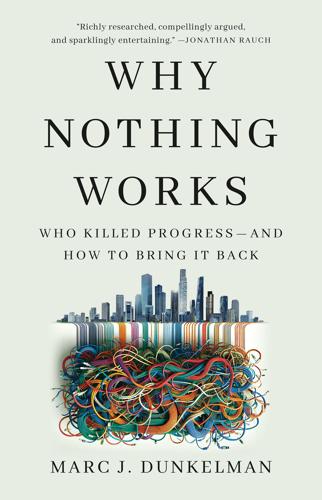
Why Nothing Works: Who Killed Progress--And How to Bring It Back
by
Marc J Dunkelman
Published 17 Feb 2025
The case for popular cynicism only seemed to grow stronger and more pervasive. It wasn’t just Vietnam and Watergate. A prison rebellion at Attica, in upstate New York. A full recitation of the atrocities in My Lai. The Manson Family’s cultish rampage through Southern California. The infamous Stanford prison experiment, where students pretending to be guards began to abuse students pretending to be inmates.113 When Rolling Stone published Hunter S. Thompson’s Fear and Loathing in Las Vegas, gonzo journalism’s almost dystopian quality read to some as an indictment of the drug-riddled counterculture of the 1960s.
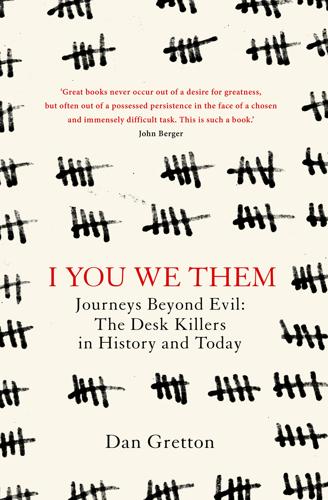
I You We Them
by
Dan Gretton
But if the volunteers had been told at the outset that the shocks weren’t real, or that the ‘learner’ in the other room was only an actor who was part of the experiment, the research would have had no value at all. This for me has always been the glaring weakness at the heart of Philip Zimbardo’s ‘Stanford Prison Experiment’ in 1971, when college student volunteers were allocated ‘roles’ as ‘prisoners’ or ‘prison guards’. All participants were essentially involved in a piece of role-play from the outset, everyone knowing that the conditions were only simulated, and far from real world. However disturbing some of the subsequent behaviour was, there was never an underpinning of reality to the research, as there was with Milgram’s experiments.
…
After being found guilty of fraud and criminal complicity in the auditing of the American energy corporation Enron in 2001, Arthur Andersen was wound up – though its consultancy arm, which split from the main company in 2000, continues to operate as Accenture. 2 As I revised this chapter, the new Italian interior minister, Matteo Salvini, promised to turn ‘words into action’ and begin the process of expelling thousands of Roma from Italy: ‘Far-right Italy minister vows “action” to expel thousands of Roma’, Guardian, 19 June 2018. 3 The Nigerian government had alleged that four people, not five, as David states here, were killed by associates of Saro-Wiwa (this allegation was never supported with any factual evidence). 4 Figures from the Bureau of Investigative Journalism. 5 Report on Civilian Harm and Conflict in Northwest Pakistan by American NGO CIVIC, October 2010. 6 See ‘Judging the Desk Killers’ in Book One, Chapter Thirteen 7 See chapter notes for further reflections on the ethics of Milgram’s experiment and Zimbardo’s ‘Stanford Prison Experiment’. 8 This example is taken from Albert Bandura’s invaluable paper ‘Moral Disengagement in the Perpetration of Inhumanities’ in Personality and Social Psychology Review (1999). 14 The Oilman and the Broken Wing 1 World in Action, Granada TV, 13 May 1996. 15 A Painting in The Hague; A Farmhouse in Suffolk; A Stadium in Somalia 1 This term ‘sacrifice zones’ was originally coined in the Soviet Union to denote areas that would be sacrificed in the case of a nuclear war, but more recently it has been used by American environmental writers Steve Lerner and Chris Hedges to describe exploited and environmentally degraded industrial zones. 2 ‘The records of no small town in England, we suppose, have been treated with more patient and scholarly care than Mr Gretton has shown in this book.
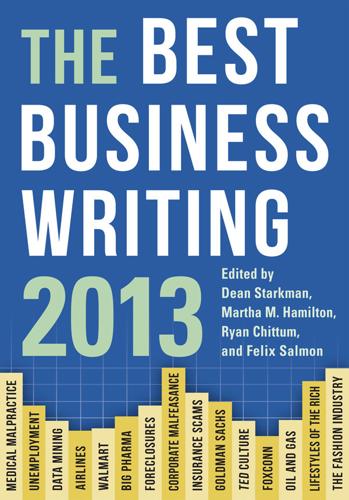
The Best Business Writing 2013
by
Dean Starkman
Published 1 Jan 2013
Perhaps he can explain how “ideas worth spreading” become “ideas no footnotes can support.” The Khannas’ book is not the only piece of literary rubbish carrying the TED brand. Another recently published TED book called The Demise of Guys: Why Boys Are Struggling and What We Can Do About It—coauthored by Philip Zimbardo, of the Stanford Prison Experiment fame, is an apt example of what transpires when TED ideas happen to good people. One would think that a scholar as distinguished as Zimbardo would not need to set foot in Khanna-land, but, alas, his book brims with almost as many clichés and pseudo-daring pronouncements. Did you know that “in porn, male actors have enormous penises,” and that “porn is not about romance”?

Adaptive Markets: Financial Evolution at the Speed of Thought
by
Andrew W. Lo
Published 3 Apr 2017
Slowly, I began to understand what I was witnessing—a hypothetical reenactment of atrocities that occurred at Nazi concentration camps, complete with the subject’s protestations during the debriefing that he didn’t want to do it and tried to stop, but was ordered to continue. I don’t think I’ll ever look at culture the same way again. Even more notorious is the Stanford prison experiment, conducted by the Stanford University psychologist Philip Zimbardo in 1971. In the two-week experiment conducted in the basement of the Stanford psychology department, Zimbardo randomly assigned volunteers to the roles of guards and prisoners.17 Almost immediately after the experiment began, the “guards” started to behave in a dehumanizing way toward the “prisoners,” subjecting them to verbal harassment, forced exercise, manipulation of sleeping conditions, manipulation of bathroom privileges (some of it physically filthy), and the use of nudity to humiliate the “prisoners.”
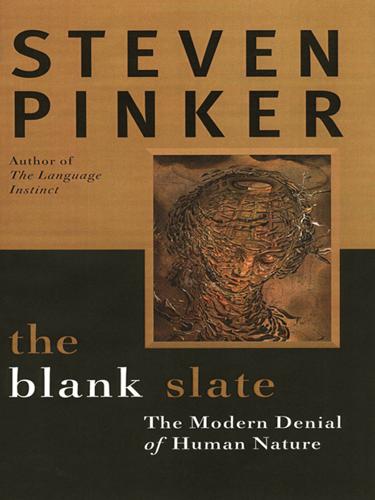
The Blank Slate: The Modern Denial of Human Nature
by
Steven Pinker
Published 1 Jan 2002
R., & Kagan, J. 1996. Perception of music by infants. Nature, 383, 29. Zhou, R., & Black, I. B. 2000. Development of neural maps: Molecular mechanisms. In M. S. Gazzaniga (Ed.),The new cognitive neurosciences. Cambridge, Mass.: MIT Press. Zimbardo, P. G., Maslach, C., & Haney, C. 2000. Reflections on the Stanford Prison Experiment: Genesis, transformations, consequences. In T. Blass (Ed.),Current perspectives on the Milgram paradigm. Mahwah, N.J.: Erlbaum. Zimler, J., & Keenan, J. M. 1983. Imagery in the congenitally blind: How visual are visual images? Journal of Experimental Psychology: Learning, Memory, and Cognition, 9, 269–282.